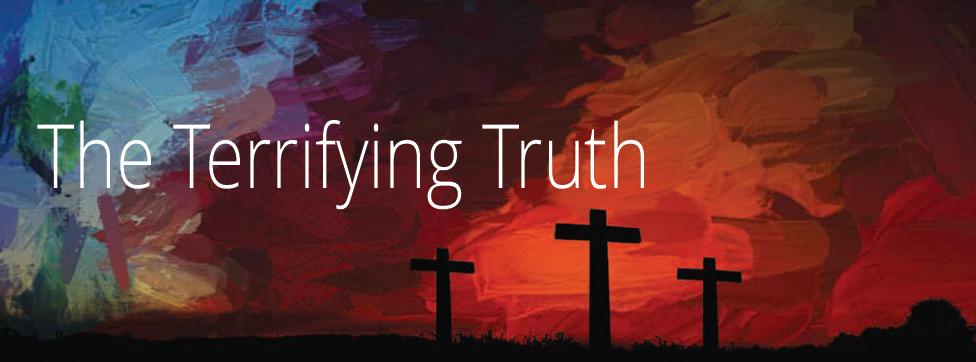Bloodied, bruised, beaten, nailed and speared. It was hard to believe that Jesus, the Son of God, the Word (Logos) was dead. After all, He was the Messiah – the promised, long-awaited Anointed Saviour! Ancient prophecies told of his rulership, might and power. During his ministry, he healed the sick, gave sight to the blind, raised the dead and forgave their sins, and if you knew those ancient scriptures, then only God can lay claim to that. And now the lifeless body of the Son of God hung, bloodied, pierced and expired.
The brutality of Roman rule seemed to triumph once again. The King of the Jews was dead. Those who had hoped in a different outcome now cowered in a mixture of fear, contempt and brewing anger.
The turn of events, unpredictable at best, was not what any of Jesus’ disciples anticipated. Earlier in the ordeal, when the soldiers came with clubs, swords and lanterns to arrest Jesus in the Garden of Gethsemane, they fell over when Jesus asked them who they were looking for. “Jesus of Nazareth,” they replied.
The power of “I am,” conveyed in Jesus’ response caused even battle-hardened warriors to collapse in helplessness. But, then, Jesus let them arrest Him. That’s when Peter, seeing “events seemingly go so wrong” clumsily wielded his sword, but failed to decapitate the high priest’s servant.
Now, hours later, Jesus was dead. Darkness and terror lay in the hearts of the living, most of all his followers. It just wasn’t meant to happen that way! Or was it?
The gospel narratives clearly show that on several occasions Jesus predicted his death to be followed by his resurrection three days and three nights later. But it didn’t really register even to his closest disciples. Jesus’ detractors, however, the Jewish religious rulers namely the Pharisees, did remember Jesus’ prophetic assurances, and so added security was enforced around the tomb, ensuring no unpredicted outcome.
The belief in the literal resurrection of Jesus, the Son of God and the Son of Man, is at the heart of the Christian message, hope and doctrine. There is no other central teaching, no other matching doctrine. Jesus died on a Wednesday afternoon, was buried before sunset prior to the high day of Unleavened Bread, and rose from the dead sometime after sunset that following Saturday night. When Mary arrived at the tomb early on the Sunday morning, Jesus was gone.
The angelic messenger questioned her, “Why are you looking for the living among the dead? He’s not here. He is risen!”
Today, we stand on the testimonies of those first century eye witnesses. We see their despair, and feel their darkness. And then, just as Jesus predicted, we too exult in their exceedingly great joy at seeing their Lord and Saviour again. Such joy and gladness continues to echo across the millennia in the endearing and enduring faith of those who would follow.
Many years later, one of Jesus’ closest disciples again saw the now glorified Son of God in a powerful and terrifying vision. Jesus said to John, “Fear not, I am the first and the last, and the living one. I died, and behold I am alive for evermore…”
If it is true that Jesus, the Logos, the Son of God, died and rose again, then this narrative seriously needs our attention. It’s otherwise foolishness to relegate such compelling evidence as fables to be discarded to the realm of fantasy. As verifiable, factual recording of events, Jesus’ resurrection then however must be the most terrifying truth we could ever encounter, because it suddenly condemns our society’s atheistic suppositions as deceptively and dangerously wrong, just as it also opens up the realms of possibility and hope.
Without “resurrection” there is no hope; human life is otherwise just a random accident, neither good or bad, with no meaning or purpose. But, if the Logos who spoke everything into existence, then entered our reality of time, matter and space to demonstrate complete redemption and forgiveness by his own blood, and he is in fact who he says he is, then you and I have a responsibility to dare to ask: “What does it mean for me, and everyone else who has ever lived?”
Are we willing to explore the compelling reasons to believe and hope in the power and promise of glorious resurrection life?

